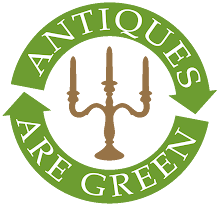
Hot on the heels of the Antiques Are Green campaign comes the first 'National Antiques Week' in Britain! To be held from 23rd-30th November, the week aims to encourage more people to visit their local antiques shops, auction house or fair and buy and enjoy antiques, collectables and 20thC design. A high profile team of companies and individuals, including BBC Homes & Antiques, The Antiques Trade Gazette, AntiqueNews, LAPADA, and BADA, is also actively pushing the government to support and promote the antiques and collectables industry - which contributes billions of pounds to the national economy. On that note, why not show your support and love for antiques by clicking here to sign up to the online petition now? I've just joined the hundreds who have already.
Details of all the many supporters and events will be published on Antiques.co.uk and AntiqueNews, and you can even download a free poster to show your support!











.png)